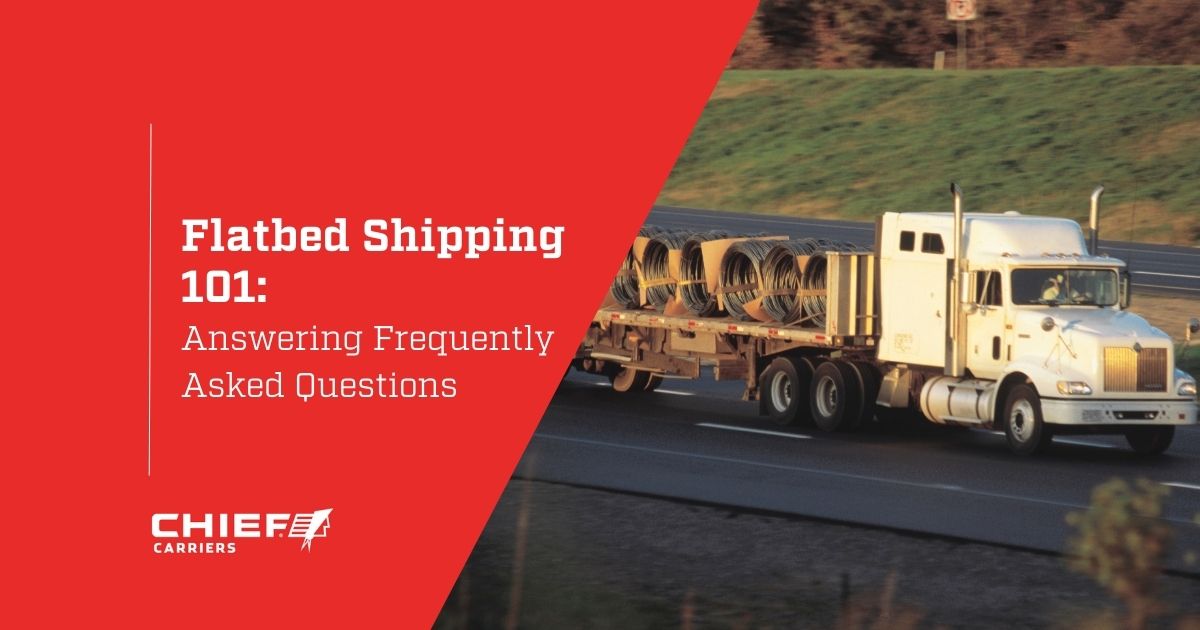Your Guide to Flatbed Freight Shipping
Flatbed shipping plays a vital role in numerous industries, and using it can save your business money and headaches. But how do you know when to send shipments by flatbed truck, what factors influence the shipping costs, and if you can be certain your cargo will arrive safely?
As a leader in the flatbed freight industry, Chief Carriers understands that navigating the complexities of flatbed shipping can be intimidating. We’ll give you answers to the most commonly asked questions about shipping freight by flatbed truck. From flatbed shipping rates to load securement regulations to specialized driver training, you’ll be able to make informed business decisions.
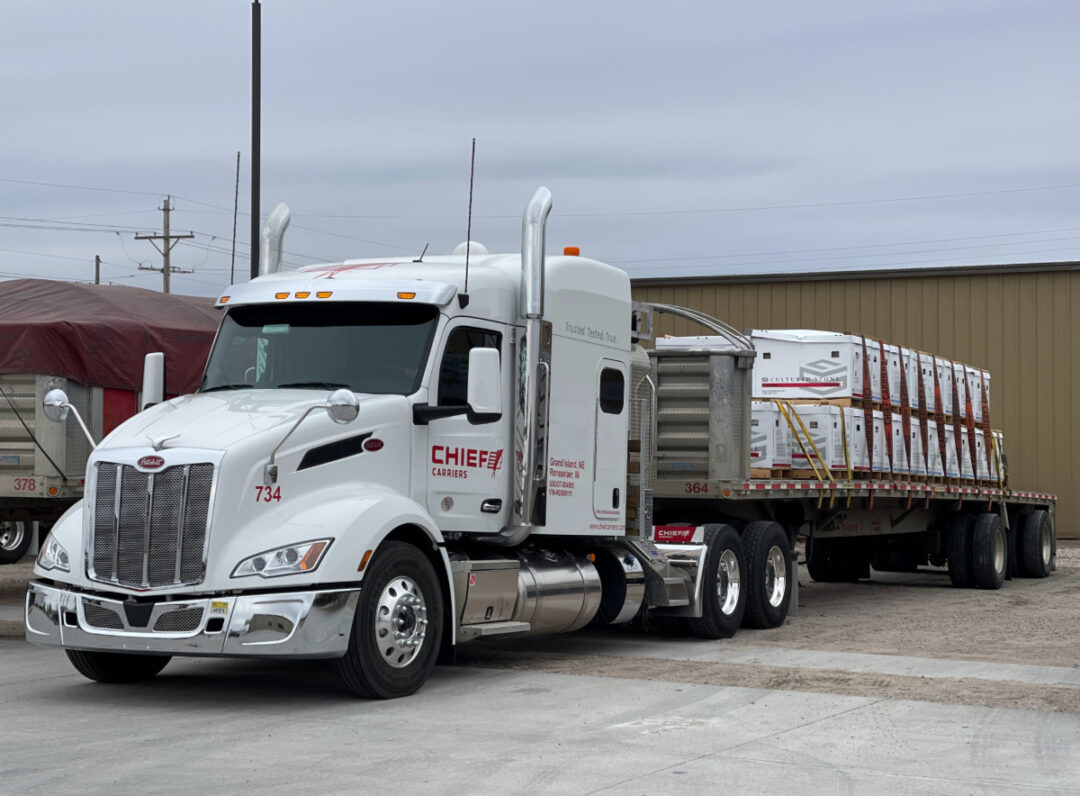
General Flatbed Shipping Questions
Understanding the ins and outs of flatbed shipping is key for a smooth process. Here are some of the most common general questions people have when exploring this transportation method.
What is Flatbed Shipping?
Flatbed shipping involves transporting goods on an open trailer with no sides or roof. This design allows for loading and unloading from all angles, making it ideal for items that cannot fit in enclosed trailers or require loading with cranes or forklifts. Flatbed carriers have specialized trailers, accessories, and driver training that comply with specific regulations, providing safe and legal flatbed freight transportation.
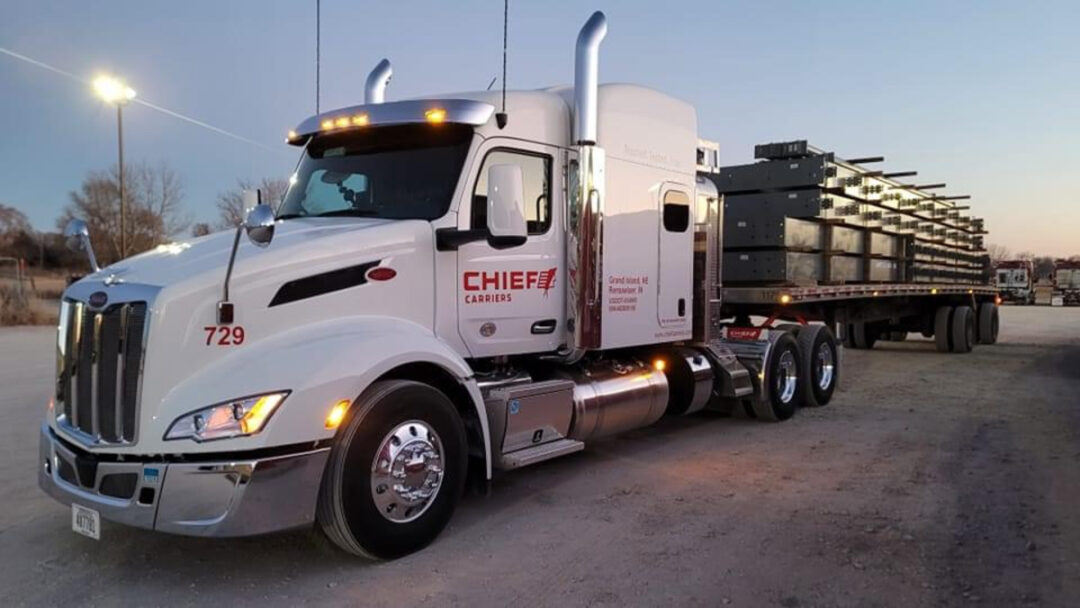
What types of cargo are typically shipped via flatbed?
Flatbed trucks are used to transport large, heavy, or oddly shaped cargo that can’t be transported by traditional truck trailers. This includes a wide variety of freight, such as:
- Construction materials, such as lumber, steel beams, and pipes
- Large machinery and equipment
- Vehicles
- Building supplies
- Oversized or uniquely shaped items
What are the benefits of using flatbed trailers for shipping?
The primary advantages of shipping by flatbed trailer include:
- Versatility: Ability to handle various sizes and shapes of cargo.
- Ease of Loading/Unloading: Accessibility from all sides simplifies the process.
- Accommodation of Oversized Loads: Flatbeds can often handle freight that exceeds the dimensions of standard trailers, although permits may be required.
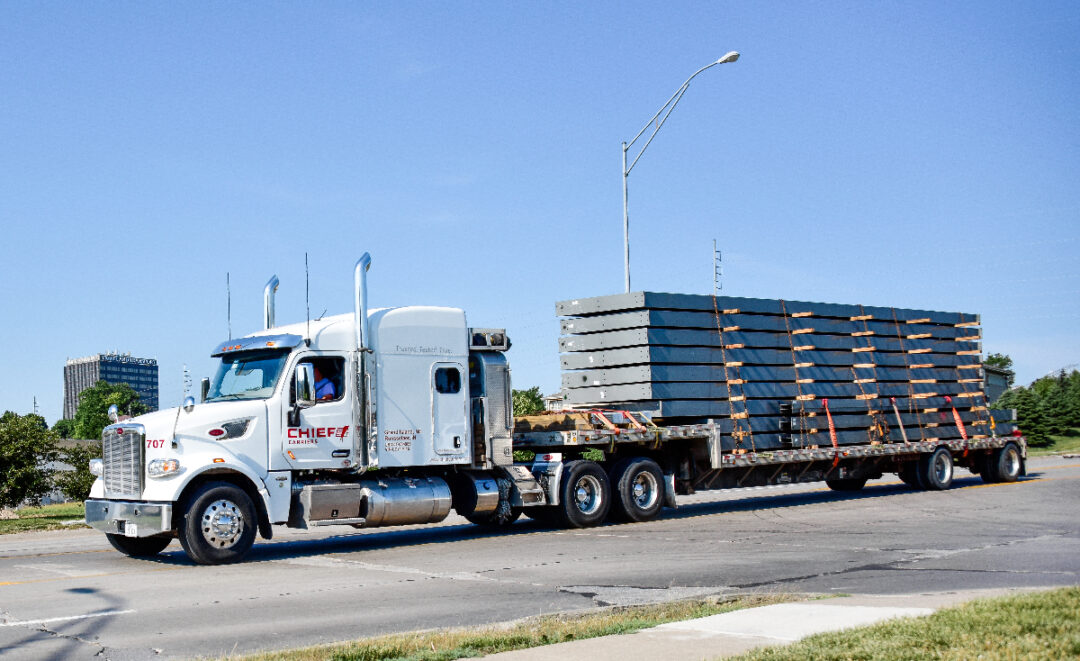
Understanding Flatbed Trailers and Equipment
There are different kinds of trailers and essential equipment used within the flatbed shipping sector. The following are frequently asked questions about flatbed trailer types, equipment, and accessories.
What are the different types of flatbed trailers?
Several specialized types of flatbed trailers exist to accommodate different shipping needs:
- Standard Flatbed: The most common type, suitable for general freight. Typically 48 to 53 feet long and 8.5 feet wide, with a maximum legal cargo weight of around 48,000 pounds.
- Step Deck (or Drop Deck): Features a lower deck, allowing for the transport of taller cargo that would exceed height restrictions on a standard flatbed.
- Removable Gooseneck (RGN): The front detaches and lowers to the ground, creating a ramp for easy loading of heavy equipment. RGNs can often handle very heavy loads, sometimes up to 150,000 pounds with multiple axles.
- Lowboy (or Double Drop): Has a low deck in the middle, ideal for transporting extremely tall items.
- Extendable Flatbed: Can be lengthened to carry exceptionally long cargo like pipes or wind turbine blades.
- Conestoga: A flatbed with a retractable tarp system, offering protection from the elements while retaining the loading flexibility of a flatbed.
- Side Kit: Flatbeds with removable sides, providing some containment for loose or non-crated goods.
Understanding the types of flatbed trailers and their cargo uses helps you make an informed decision about your flatbed options.
What equipment and flatbed accessories are used to secure flatbed cargo?
Securing cargo on a flatbed is critical. Standard flatbed securement equipment and flatbed accessories include:
- Tie-down straps: Heavy-duty flatbed straps with ratchets or buckles to secure the load.
- Chains and binders: Used for heavier, more rigid cargo.
- Tarps: To protect freight from weather conditions.
- Edge protectors: Placed on the edges of cargo to prevent straps from damaging it.
- Dunnage: Materials like wood blocks or inflatable bags are used to prevent load shifting.
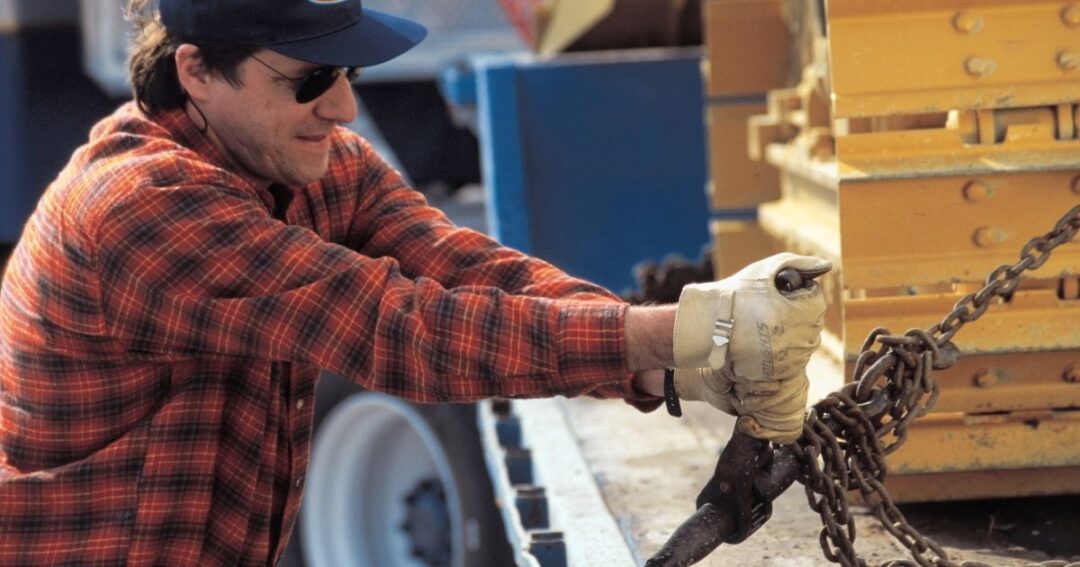
Are there specific regulations for flatbed strapping?
Yes, flatbed strapping regulations exist to ensure the safe transportation of goods. These regulations, often governed by transportation authorities, dictate the number and type of securement devices required based on the cargo’s weight and size. Factors like the working load limit (WLL) of the flatbed straps and proper securement techniques are crucial.
Questions About Flatbed Shipping Rates and Costs
Understanding the costs associated with flatbed shipping is a key concern for many businesses. Here are some frequently asked questions regarding rates and pricing factors.
How are flatbed shipping rates determined?
Several factors influence the cost of flatbed shipping rates, including:
- Distance: Longer hauls generally cost more.
- Weight and Dimensions of Cargo: Heavier or oversized loads may incur higher rates due to increased fuel consumption and potential permitting needs.
- Type of Flatbed Trailer Required: Specialized trailers like RGNs or extendable flatbeds may have higher rates due to their limited availability and specialized nature.
- Urgency of Shipment: Expedited or hot shot flatbed freight services will likely cost more.
- Origin and Destination: Rates can vary based on supply and demand in specific regions.
- Accessorial Charges: Additional fees may apply for services like tarping, driver assistance during loading/unloading, or detention (waiting time).
- Fuel Costs: Fluctuations in fuel prices can impact overall shipping costs.
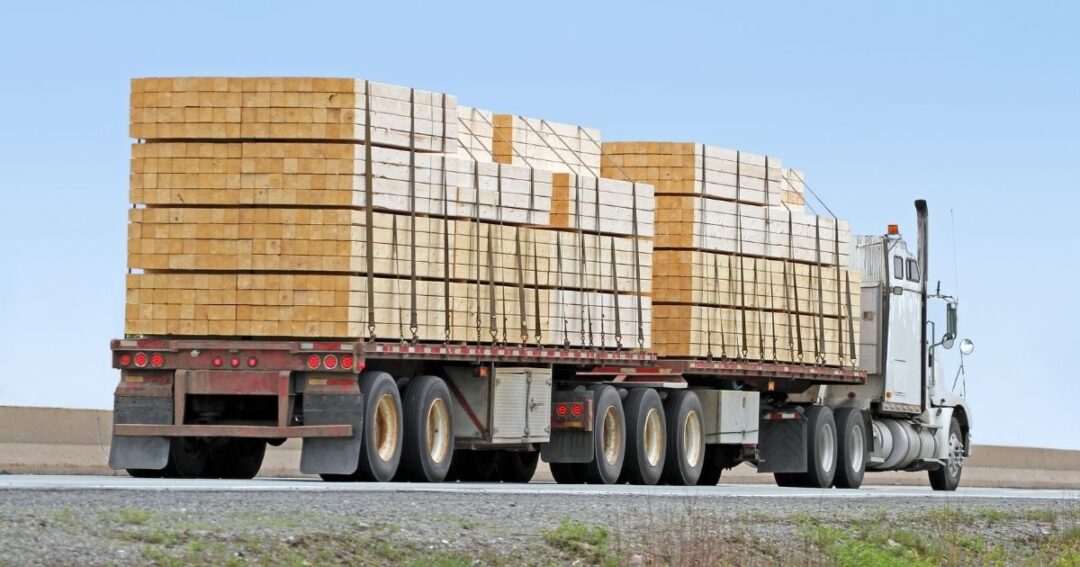
What is the typical range for flatbed shipping rates?
Flatbed shipping rates can vary significantly, but you might expect to pay anywhere from $1.75 to $4.25 per mile for legal open-deck freight. However, this is a broad estimate, and the actual rate will depend on the specific factors mentioned above.
How can I get an accurate quote for flatbed freight?
To obtain a precise quote, it’s essential to provide the shipping company with detailed information about your flatbed freight, including:
- The exact dimensions (length, width, height) and weight of the cargo.
- The origin and destination of the shipment.
- Any specific requirements, such as the need for tarping or specialized equipment.

Questions About Flatbed Truck Drivers and Safety Regulations
Beyond the equipment, the expertise of flatbed truck drivers and the rules they follow are critical. These are some frequently asked questions about flatbed driver training and safety regulations.
What kind of training do flatbed truck drivers need?
Flatbed truck driver training typically includes general commercial driving skills as well as specialized training in cargo securement techniques, understanding and adhering to flatbed strapping regulations, and handling oversized or overweight loads.
Are there specific permits required for oversized flatbed loads?
Yes, if your flatbed freight exceeds standard legal dimensions (typically 8.5 feet wide, 8.5 feet high, and 48-53 feet long), you will likely need to obtain permits from each state the shipment travels through. The cost and requirements for these permits vary.
What are some key safety considerations in flatbed trucking?
Safety is critical in flatbed trucking. Key considerations include:
- Proper cargo securement to prevent shifting or falling during transit.
- Adherence to weight limits and regulations.
- Awareness of overhead obstacles due to the open nature of the trailer and potentially tall loads.
- Safe loading and unloading procedures.
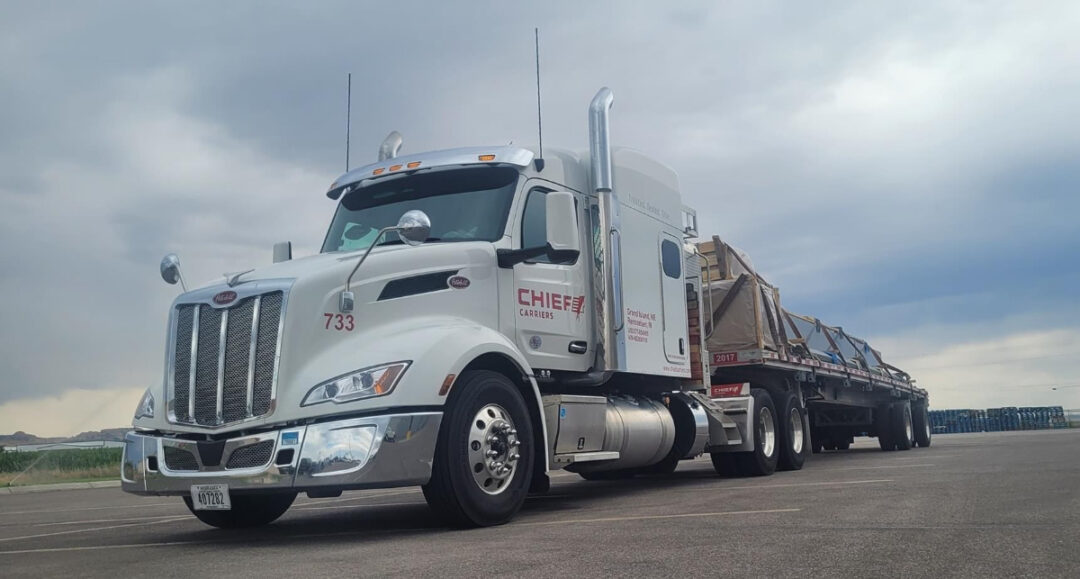
Flatbed Shipping Answers for Informed Decision-Making
Flatbed shipping is a specialized transportation method for freight that traditional freight carriers can’t handle. Understanding the nuances of flatbed shipping empowers you to make informed transportation decisions for your business that directly benefit your bottom line.
For more than 50 years, Chief Carriers has been a leader in the flatbed shipping industry, dedicated to providing reliable and efficient transportation solutions. Our extensive experience as flatbed carriers has allowed us to hone our expertise and build a deep understanding of the unique needs of this sector. Our commitment to excellent service ensures that every shipment is handled with the utmost professionalism and care.
If you have questions regarding flatbed freight transportation for your business, contact our experienced team today. We’re here to provide answers and industry insight for all your flatbed shipping needs.

